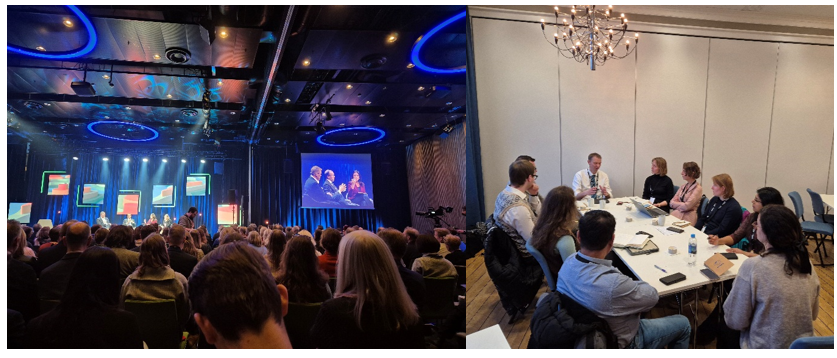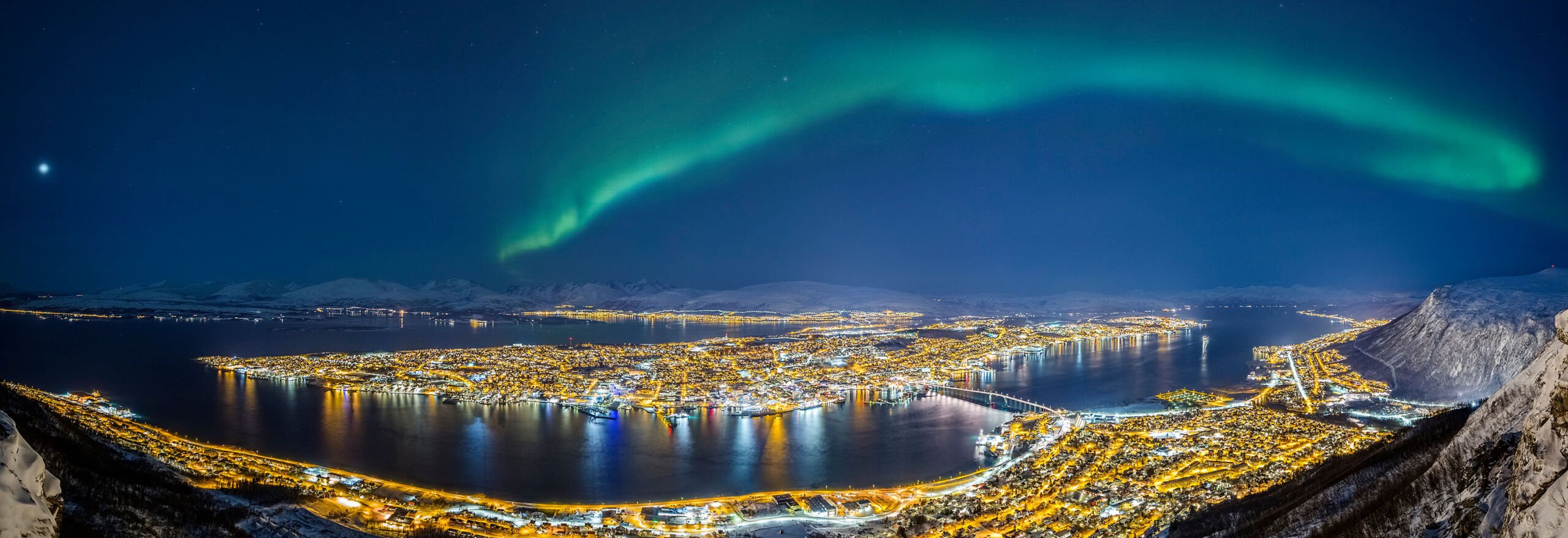The Arctic region is warming at a rate four times faster than the global average, presenting both unprecedented environmental challenges and significant geopolitical tensions. These rapid changes demand urgent attention and collaboration from Arctic nations. A central question arises: How can Arctic nations come together to address both climate change and geopolitical challenges, while advancing economically and fostering sustainability? The Arctic Frontiers 2025 conference, held from January 27th to 30th in Tromsø, Norway, sought to address this question by bringing together experts, policymakers, industry leaders, and Indigenous representatives to discuss critical issues affecting the region.
Climate Change Adaptation and Knowledge Transfer
The necessity for robust, tailored knowledge to support climate change adaptation in the Arctic was a major theme. Long-term observation programs, such as the Norwegian Earth System Model (NorESM), were highlighted for their ability to provide valuable data on climate change, including land properties, hydrology, and ocean characteristics. Adapting this knowledge to local and regional contexts was emphasized as crucial for effective planning and management.
A central point of discussion was integrating Indigenous knowledge, particularly from Sámi communities, into climate adaptation strategies. Trust-building with local communities was identified as a key step in successfully implementing adaptation measures. Communicating science in a humane way to the policy makers, wider audiences and continuing the dialogue was seen as one of the most crucial steps for advancing research finding towards actual implementation.

Future of Arctic Collaboration and Science Diplomacy
Participants discussed the evolving landscape of Arctic collaboration, especially amid rising geopolitical tensions. The focus was on how Arctic nations can strengthen collaborative frameworks leading up to 2032 and beyond while ensuring equitable and ethical engagement in science diplomacy. Key points included the need for cooperation with countries like Canada and China, despite challenges like limited access to Russian Arctic data, and the importance of safeguarding knowledge production in the region. Collaborative models should emphasize international partnerships for sustainable development and peace, beyond the boundaries of geopolitical interests.
Sustainable Energy Transition in the Arctic
The challenges and opportunities in achieving a sustainable energy transition in the Arctic were critically examined. Discussions centered on aligning energy solutions with local values, ensuring that transitions respect the deep cultural connections to nature held by Arctic communities. The session underscored the importance of community engagement and innovative energy practices. The feasibility of the green transition was questioned, with some discussions highlighting the need for better policy measures to make renewable energy solutions viable in the Arctic’s unique environments.
Advancements in Climate Data and Modeling
Recent advancements in climate data and polar climate models were discussed, with an emphasis on high-resolution models and increased confidence in projections. These developments are essential in assessing the impacts of climate change in the Arctic, including shifts in marine ecosystems and ice cover.
The importance of co-designing climate projections with local communities to meet their needs was emphasized. Presentations also covered specific issues such as marine heatwaves around Svalbard and changes in drift patterns in the Norwegian and Barents Seas.
Geopolitical Dynamics and Arctic Communities
The central focus of the conference was on how global geopolitical dynamics are affecting Arctic communities. As Arctic regions are becoming increasingly strategic, the session explored how geopolitical tensions influence demographic stability and security in Arctic villages.
It was emphasized that cross-border dialogue is crucial for fostering peace and cooperation, particularly between Russia and Nordic countries. The Sámi community, whose historical presence spans national borders, was highlighted as a key participant in Arctic governance, bringing valuable cultural and historical insights to decision-making.
Funding Opportunities for Arctic Collaboration
A new funding opportunity developed through the partnership between Interreg Aurora and Interreg Northern Periphery and Arctic programs was announced. The initiative aims to strengthen synergies among Arctic stakeholders and promote collaborative projects addressing the unique challenges faced by Arctic and near-Arctic regions. This initiative supports projects that contribute to the EU Arctic Policy’s practical implementation, enhancing regional development through cross-border collaboration.
Sustainable Arctic Shipping
The session on sustainable Arctic shipping focused on balancing the growing demand for maritime transport with environmental stewardship. The session emphasized the need for innovations that prioritize resilience, sustainability, and economic viability in Arctic maritime activities.
Economic, Political, and Environmental Shifts in the Green Transition
The session examined the shifts required for a green transition in the Arctic. Discussions focused on balancing potential losses and gains across different pathways to a greener economy, and the importance of ensuring local communities are included in these decision-making processes.
Integrating Arctic Security and Social Resilience
A major discussion was how military, and safety measures could be integrated into social services to enhance Arctic communities’ resilience. Technologies like GPS tracking and acoustic monitoring were suggested as dual-purpose tools for ensuring security and improving civil safety in remote areas. These technologies could also help in monitoring environmental changes and maritime traffic, thereby enhancing both safety and sustainability.
The session highlighted the importance of trust-building within Arctic societies, with the Sámi community being a key player in fostering cross-border collaboration and governance. Indigenous knowledge was recognized as essential in shaping effective policies that are sensitive to both security and cultural needs.
Sustainable Development and Innovation in Arctic Industries
The session on sustainable development emphasized the need to attract people and create jobs in the Arctic, particularly through the development of new industries. Innovation in open-ocean industries and other economic activities was seen as a way to build resilience, but there was a clear call for engaging local communities in the planning process to ensure that development aligns with their needs.
The integration of Indigenous knowledge into policymaking was seen as vital for balancing economic development with conservation. This was especially relevant in sectors like shipping, where traditional knowledge could help protect key ecosystems, such as bird nesting grounds, while allowing for necessary economic activity.
Preserving Arctic Biodiversity and Strengthening Local Expertise
A recurring theme in the discussions was the ongoing loss of biodiversity in Norway and the wider Arctic. As Arctic ice melts and new shipping routes emerge, the question arose: should these routes be exploited commercially, or should efforts be made to preserve these fragile ecosystems?
The conference underscored the importance of strengthening local expertise, particularly in fisheries and research, to ensure that Arctic people are involved in the data collection and decision-making processes. Local communities must be central to shaping their economic future, rather than being passive participants in externally driven development projects.
Regenerative Blue Economy and the Future of Arctic Livelihoods
One of the most important topics discussed was the development of a regenerative blue economy. This approach aims to restore marine ecosystems while enabling sustainable economic activities like fishing, aquaculture, and ocean-based industries.
The session emphasized that building a regenerative blue economy must involve local communities, combining traditional knowledge, scientific research, and innovative technologies. This collaborative, community-driven approach is seen as crucial for building a resilient, sustainable future for Arctic livelihoods.
Conclusion
Arctic Frontiers 2025: Beyond Borders provided a platform for rich discussions on the future of the Arctic region. The conference highlighted the necessity of integrating scientific knowledge with Indigenous perspectives, fostering international collaboration amidst geopolitical tensions, and pursuing sustainable development strategies that reflect the unique needs of Arctic communities. The key takeaways emphasized the importance of local participation, innovation, and cross-border cooperation in shaping the Arctic’s future, ensuring that it remains resilient and sustainable for generations to come.
Author:
Shammi Akter Keya, Grant Writer, Karelia Unversity of Applied Sciences
Cover photo: Adobe Stock

